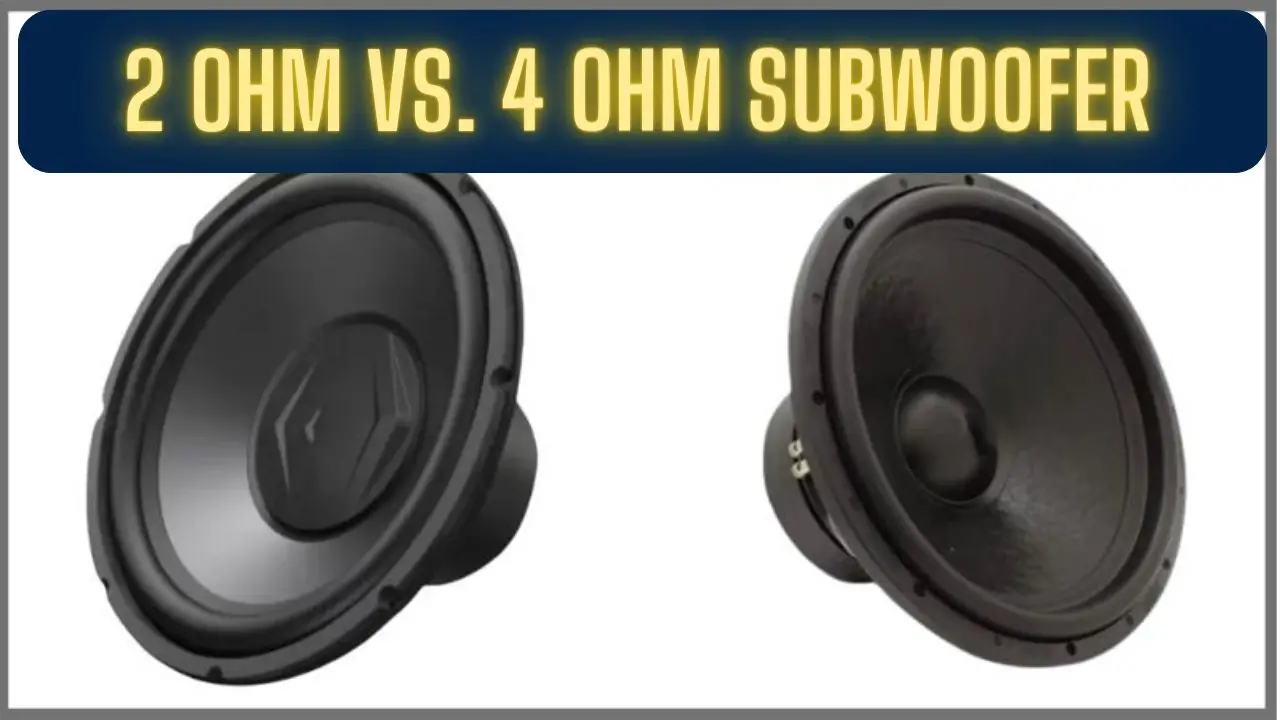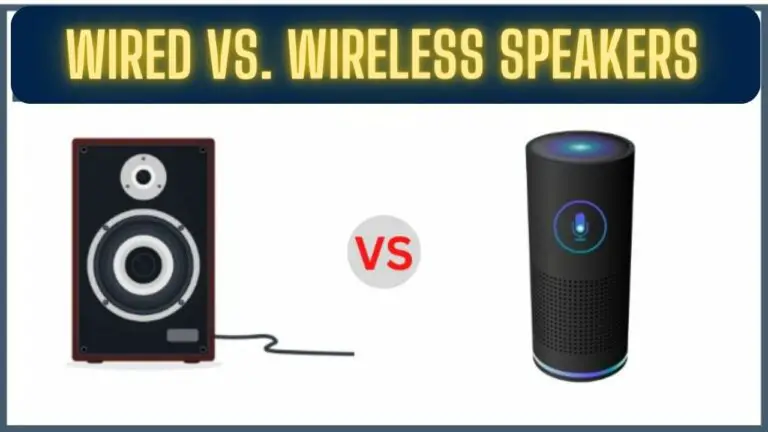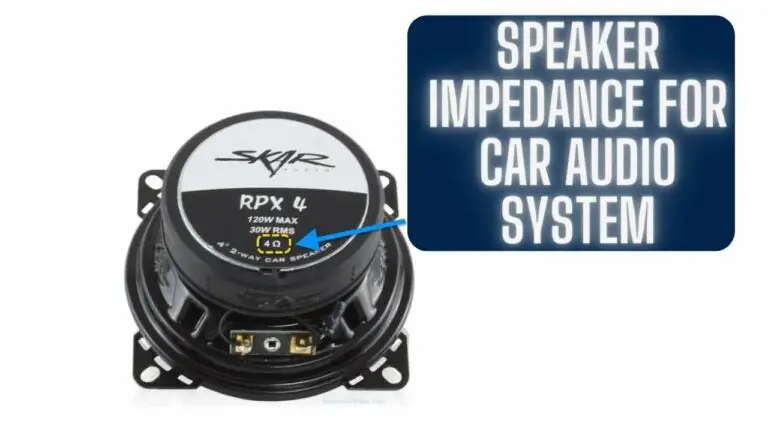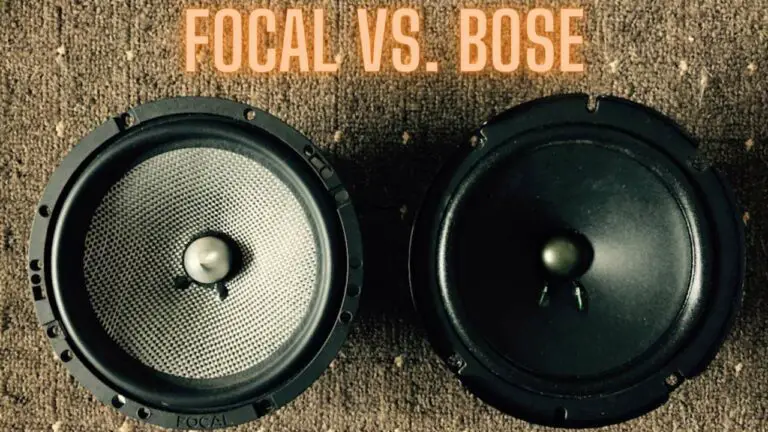2 Ohm vs. 4 Ohm Subwoofer: Making the Right Choice
Introduction
Choosing the right subwoofer for your car audio system is essential for achieving the desired bass response and overall sound quality. Two common options you’ll encounter are 2-ohm and 4-ohm subwoofers. Understanding the differences between them will help you make an informed decision. In this article, we’ll explore the key distinctions between 2-ohm and 4-ohm subwoofers.
Ohm Rating Basics:
Before diving into the differences, it’s essential to understand what the “Ohm rating” refers to in the context of subwoofers:
- Ohms (Ω): Ohms measure the electrical resistance of a speaker or subwoofer’s voice coil. A lower Ohm rating (e.g., 2 ohms) indicates lower resistance, while a higher rating (e.g., 4 ohms) signifies higher resistance.
2-Ohm Subwoofer:
1. Lower Resistance:
- Advantage: 2-ohm subwoofers have lower electrical resistance in their voice coils. This means they draw more power from your car’s amplifier, potentially delivering more bass output.
2. Power Handling:
- Advantage: Due to their lower resistance, 2-ohm subwoofers can handle more power from amplifiers, making them suitable for those seeking higher volume levels and powerful bass.
3. Wiring Options:
- Consideration: Wiring options for 2-ohm subwoofers depend on your amplifier and setup. You can wire them in parallel (resulting in a 1-ohm load) or in series (resulting in a 4-ohm load) to match your amplifier’s capabilities.
4. Amplifier Compatibility:
- Consideration: Ensure that your car amplifier is compatible with a 2-ohm load, as not all amplifiers are designed to handle such low resistance.
4-Ohm Subwoofer:
1. Higher Resistance:
- Advantage: 4-ohm subwoofers have higher resistance in their voice coils, which can be more compatible with a wider range of car amplifiers.
2. Power Handling:
- Advantage: While they may not handle as much power as 2-ohm subwoofers, 4-ohm subwoofers can still provide ample bass output and are suitable for most car audio setups.
3. Wiring Options:
- Advantage: 4-ohm subwoofers offer more wiring flexibility. They can be wired in parallel (resulting in a 2-ohm load) or in series (resulting in an 8-ohm load) to match different amplifier capabilities.
4. Amplifier Compatibility:
- Advantage: 4-ohm subwoofers are generally more compatible with a broader range of car amplifiers, making them a safer choice if you plan to upgrade your system later.
Similarities between 2 Ohm Vs 4 Ohm Subwoofer
While 2-ohm and 4-ohm subwoofers have significant differences in their electrical resistance and some performance aspects, they also share certain similarities, such as:
1. Speaker Components:
- Both 2-ohm and 4-ohm subwoofers share similar speaker components, including the cone, voice coil, and magnet structure. These components contribute to the subwoofer’s sound quality and performance.
2. Cone Material and Design:
- Subwoofers with the same brand and model but different Ohm ratings typically have similar cone materials and designs. The cone material and design affect the subwoofer’s ability to produce accurate and powerful bass.
3. Frequency Response Range:
- Subwoofers with different Ohm ratings from the same product line often have similar frequency response ranges. This range indicates the subwoofer’s ability to reproduce low-frequency sounds, and it is a key factor in their performance.
4. Enclosure Compatibility:
- Both 2-ohm and 4-ohm subwoofers can be used in a variety of enclosure types, such as sealed, ported, or bandpass enclosures, depending on their specifications. The choice of enclosure can significantly impact the subwoofer’s performance and sound characteristics.
5. Brand and Model:
- Subwoofers from the same brand and model line often share similar design principles, regardless of their Ohm ratings. This means that other features, such as the subwoofer’s size, power handling, and materials, may be consistent between 2-ohm and 4-ohm variants of the same model.
6. Installation Considerations:
- Both 2-ohm and 4-ohm subwoofers require appropriate installation to function correctly. This includes connecting them to a compatible amplifier and configuring the wiring to match the subwoofer’s Ohm rating.
7. Sound Quality Potential:
- While the specific impedance affects the power handling and compatibility with amplifiers, both 2-ohm and 4-ohm subwoofers have the potential to deliver high-quality bass and sound when properly matched with the right equipment and setup.
It’s important to note that the similarities between 2-ohm and 4-ohm subwoofers often stem from their shared brand and model lineage. While these similarities exist, their different Ohm ratings can lead to variations in performance, power handling, and amplifier compatibility. Therefore, it’s crucial to consider your specific audio system requirements and goals when choosing between them.
2-Ohm vs. 4-Ohm Subwoofer: Understanding the Key Differences
2-ohm and 4-ohm subwoofers are two common options in car audio systems, and they differ primarily in their electrical resistance, which affects various aspects of their performance. Here are the key differences between 2-ohm and 4-ohm subwoofers:
1. Electrical Resistance:
- 2-Ohm Subwoofer:
- A 2-ohm subwoofer has lower electrical resistance in its voice coil. This means it allows more electrical current to flow through its coil compared to a 4-ohm subwoofer.
- Lower resistance results in the subwoofer drawing more power from the amplifier, potentially delivering more bass output.
- 4-Ohm Subwoofer:
- A 4-ohm subwoofer has higher electrical resistance in its voice coil. It restricts the flow of electrical current compared to a 2-ohm subwoofer.
- Higher resistance means the subwoofer draws less power from the amplifier, which can result in slightly reduced bass output compared to a 2-ohm subwoofer.
2. Power Handling:
- 2-Ohm Subwoofer:
- Due to its lower resistance, a 2-ohm subwoofer can handle more power from the amplifier. This makes it suitable for those seeking higher volume levels and powerful bass.
- 4-Ohm Subwoofer:
- While it may not handle as much power as a 2-ohm subwoofer, a 4-ohm subwoofer can still provide ample bass output and is suitable for most car audio setups.
3. Amplifier Compatibility:
- 2-Ohm Subwoofer:
- You need an amplifier that can handle a 2-ohm load to match a 2-ohm subwoofer. Not all amplifiers are optimized for such low resistance.
- 4-Ohm Subwoofer:
- 4-ohm subwoofers are generally more compatible with a broader range of car amplifiers. They are a safer choice if you plan to upgrade your system later or if your amplifier doesn’t support 2-ohm loads.
4. Wiring Options:
- 2-Ohm Subwoofer:
- 2-ohm subwoofers offer limited wiring options. They can be wired in parallel (resulting in a 1-ohm load) or in series (resulting in a 4-ohm load) to match your amplifier’s capabilities.
- 4-Ohm Subwoofer:
- 4-ohm subwoofers provide more wiring flexibility. They can be wired in parallel (resulting in a 2-ohm load) or in series (resulting in an 8-ohm load) to match different amplifier requirements.
5. Heat Generation:
- 2-Ohm Subwoofer:
- Because it draws more power from the amplifier, a 2-ohm subwoofer may generate more heat, which could potentially affect its long-term durability.
- 4-Ohm Subwoofer:
- 4-ohm subwoofers generally generate less heat because they draw less power from the amplifier.
6. Compatibility with Multiple Subwoofers:
- 2-Ohm Subwoofer:
- If you plan to use multiple subwoofers in parallel, such as for a dual-subwoofer setup, 2-ohm subwoofers may be the preferred choice to achieve the desired impedance load.
- 4-Ohm Subwoofer:
- Using multiple 4-ohm subwoofers can be more straightforward in terms of wiring, especially if you want to create a 2-ohm load when connecting multiple subs.
7. Efficiency:
- 2-Ohm Subwoofer:
- 2-ohm subwoofers are often considered more efficient in converting electrical power into acoustic output due to their lower resistance.
- 4-Ohm Subwoofer:
- 4-ohm subwoofers may be slightly less efficient in this regard but are still capable of delivering powerful bass.
8. Sound Quality:
- 2-Ohm Subwoofer:
- Some audiophiles argue that 2-ohm subwoofers can offer better control over the driver and potentially better sound quality when matched with a suitable amplifier.
- 4-Ohm Subwoofer:
- 4-ohm subwoofers are known for their compatibility with a wide range of amplifiers, making it easier to achieve balanced sound quality.
When choosing between a 2-ohm and a 4-ohm subwoofer, consider your amplifier’s compatibility, power requirements, wiring preferences, and your goals for bass output. Both have their advantages, and the choice ultimately depends on your specific car audio setup and preferences.
Choosing Between 2-Ohm and 4-Ohm Subwoofers:
- Amplifier Compatibility: Check your car amplifier’s specifications to determine if it is optimized for a 2-ohm or 4-ohm load. Using a subwoofer with an incompatible Ohm rating can lead to overheating or damage.
- Power Goals: Consider your desired bass output and volume levels. If you’re aiming for a powerful and booming bass, a 2-ohm subwoofer may be more suitable. For balanced bass with broader amplifier compatibility, a 4-ohm subwoofer could be a better choice.
- Wiring Flexibility: Think about your wiring setup. If you want flexibility in wiring configurations, a 4-ohm subwoofer allows for multiple options to match your amplifier’s requirements.
- Future Upgrades: If you plan to upgrade your car audio system in the future, a 4-ohm subwoofer might be a safer choice, as it is more likely to be compatible with various amplifiers.
2 Ohm vs. 4 Ohm Subwoofer FAQS
What is the difference between a 2-ohm and a 4-ohm subwoofer?
- The primary difference is in their electrical resistance. A 2-ohm subwoofer has lower resistance in its voice coil, allowing it to draw more power from the amplifier than a 4-ohm subwoofer.
Which subwoofer should I choose for my car audio system?
- The choice depends on your amplifier’s compatibility and your goals. If your amplifier is rated for a 2-ohm load and you want higher bass output, a 2-ohm subwoofer may be suitable. If you prefer broad amplifier compatibility and plan for future upgrades, a 4-ohm subwoofer is a safer choice.
Can I use a 2-ohm subwoofer with a 4-ohm amplifier (or vice versa)?
- It’s generally not recommended to mismatch subwoofer and amplifier Ohm ratings. Using a 2-ohm subwoofer with a 4-ohm amplifier or a 4-ohm subwoofer with a 2-ohm amplifier can result in improper impedance matching, which can lead to overheating and damage.
What are the wiring options for 2-ohm and 4-ohm subwoofers?
- A 2-ohm subwoofer can be wired in parallel to achieve a 1-ohm load or in series to achieve a 4-ohm load. A 4-ohm subwoofer can be wired in parallel for a 2-ohm load or in series for an 8-ohm load.
Can I use multiple subwoofers with different Ohm ratings in the same system?
- Yes, it’s possible to use multiple subwoofers with different Ohm ratings in the same system, but careful consideration of wiring configurations and amplifier compatibility is required to achieve the desired impedance load.
Do 2-ohm subwoofers sound better than 4-ohm subwoofers?
- Sound quality is subjective, and the choice between 2-ohm and 4-ohm subwoofers does not solely determine sound quality. Proper matching with the amplifier and enclosure design play significant roles in achieving desired sound characteristics.
Are 2-ohm subwoofers more efficient than 4-ohm subwoofers?
- 2-ohm subwoofers are often considered more efficient in converting electrical power into acoustic output due to their lower resistance. However, the efficiency also depends on the specific subwoofer design and driver characteristics.
Can I switch between 2-ohm and 4-ohm subwoofers without changing amplifiers?
- Generally, it’s not recommended to switch between 2-ohm and 4-ohm subwoofers without adjusting the amplifier settings or replacing the amplifier. Amplifiers are designed to work with specific impedance loads, and mismatching can result in damage.
Are there any disadvantages to using 2-ohm or 4-ohm subwoofers?
- The primary disadvantage of 2-ohm subwoofers is the need for amplifiers designed for low-impedance loads. For 4-ohm subwoofers, the potential disadvantage is slightly reduced bass output compared to 2-ohm subwoofers when used with the same amplifier.
Can I mix 2-ohm and 4-ohm subwoofers in the same audio system?
Mixing subwoofers with different Ohm ratings can be done, but it requires careful planning and wiring configurations to achieve the desired total impedance load and proper amplifier matching.
Conclusion
Ultimately, the choice between a 2-ohm and 4-ohm subwoofer depends on your specific needs, amplifier compatibility, and the listening experience you want to achieve. Carefully consider these factors to select the subwoofer that will best complement your car audio system and deliver the bass performance you desire.








